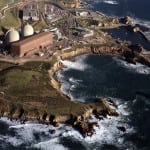COMMENTARY
Pacific Gas and Electric Co.’s (PG&E’s) bankruptcy underscores the need for an independent advisory board to monitor, and help San Luis Obispo and the surrounding community navigate through, the Diablo Canyon nuclear power plant decommissioning process.
The existing panel—the Diablo Canyon Decommissioning Engagement Panel (DCDEP)—was created by PG&E to serve as a “public relations conduit” for the company. It allows PG&E to “check the box” of public engagement, without hassle.
But, speaking as an individual with 45 years of environmental and nuclear law experience, including as a Nuclear Regulatory Commission (NRC) judge and as a member of PG&E’s DCDEP, I believe that it should be replaced with a truly independent entity. (I do not speak for the DCDEP.) San Luis Obispo (SLO) needs a robust, sustainable, and, most importantly, independent advisory board that is suitable for the long haul of decommissioning.
The reason is simple: the 11 citizen volunteers on PG&E’s DCDEP—no matter how intelligent, fair, and diligent they may be—lack the knowledge, independence, and resources needed to sustain oversight of the decommissioning process for the next 20 to 60 years. The DCDEP is a “babe in the woods” when it comes to decommissioning.
The project will cost billions of dollars. It will involve a multitude of federal, state, and local regulatory agencies, including the NRC, the Coastal Commission, Energy Commission, State Lands Commission, Public Utilities Commission, San Luis Obispo County, the SLO Consolidated Unified Independent School District, and many municipalities. In addition, non-governmental stakeholders, including environmental, labor, tax, Native American, and economic entities, clamor to participate.
Elected officials also have key roles and have responded with some constructive measures. U.S. Rep. Carbajal introduced federal legislation to create a special economic zone. State Sen. Monning and Assemblyman Cunningham successfully enacted SB 1090, a bill that directs the California Public Utilities Commission (CPUC) to approve an $85 million settlement and PG&E’s full $350 million proposed employee retention and retraining program to help mitigate impacts on the community from the plant closing. Supervisors Adam Hill and Bruce Gibson are actively engaged.
Yet, things are not going so well. State and local attempts to study the economic impacts of the Diablo decommissioning have foundered. In December 2018, PG&E told the CPUC that the cost to decommission Diablo Canyon has essentially doubled (from $2.4 billion estimated in 2017 to $4.8 billion now). In contrast, the Callan Institute in San Francisco has reported that decommissioning cost estimates fell by 2.5% in 2017. These contradicting assessments do not add up.
PG&E’s own hired expert, High Bridge Associates, criticized the slowness of PG&E’s reactor decommissioning plan, diplomatically calling it “atypically long” compared to other decommissioning projects. Likewise, despite being urged by the CPUC, the Energy Commission, and the Diablo Canyon Independent Safety Commission to expedite the transfer of spent nuclear fuel from Diablo’s reactor pools to dry casks, PG&E has decided to suspend the current spent fuel program and instead delay all offloading until 2032.
Delaying the transfer of spent fuel from the pools to the casks is bad news because offloading fuel is the single best way (short of shutting the plant down now) to reduce the radiological risks of Diablo Canyon. Greg Jaczko, former chairman of the NRC stated in 2008, “The most clear-cut example of an area where additional safety margins can be gained involves additional efforts to move spent nuclear fuel from pools to dry-cask storage.”
Given the huge stakes, and the cacophony of regulators, elected officials, and non-governmental stakeholders circling over the imminent demise of Diablo Canyon, we need an independent advisory board to bring all of the key agencies and stakeholders together in a single public forum that will promote coordination and accountability.
Smart communities elsewhere have created such entities. Vermont, New York, and Massachusetts provide excellent benchmarks for best practices. Panels in those states have state charters, follow public meeting requirements, and are subject to ex parte and conflict of interest requirements. The members are selected in a public process. Many of them are elected officials, regulatory agencies, or their designees, who either have the knowledge, skills, and expertise to confront difficult decommissioning issues, or have access to such expertise within their respective agencies. They also have representatives from labor organizations, environmental groups, and the Native American communities.
The options are clear: Either a captive corporate panel or an independent panel created by a responsible governmental agency should be created. Notably, on January 14, 2019, the Federal government weighed in on this issue by enacting the Nuclear Energy Innovation and Modernization Act. This law mandates that, within 18 months, the NRC must “identify best practices with respect to the establishment and operation of a local community advisory board” for decommissioning nuclear reactors. Up until now, the NRC has dodged this issue.
But San Luis Obispo does not need to wait 18 months. The CPUC can and should use PG&E’s current ratemaking case to charter an independent decommissioning advisory board now. The bankruptcy of PG&E adds urgency to the situation. Bankruptcy scrambles our dream of converting 100% of Diablo’s 12,000+ acres into a park or nature preserve. The victims of PG&E’s wildfires will likely get first dibs on these valuable assets. Is this just? Maybe so. The land may be divvied up, some pieces being sold to the state or environmental groups, some to developers. The goal of 100% protection just got a lot harder.
Supervisor Hill was right when he said, “The diablo is in the details.” He raised some excellent questions. I have tried to do the same.
But we need more than just PG&E’s answers. The San Luis Obispo community needs an independent advisory panel to grapple with the crucial 20- to 60-year decommissioning project that lies ahead.
—Alex Karlin is a retired NRC judge, a former U.S. Environmental Protection Agency enforcement attorney, and a resident of San Luis Obispo. His views are his own and do not reflect the position of PG&E’s Diablo Canyon Decommissioning Engagement Panel.







